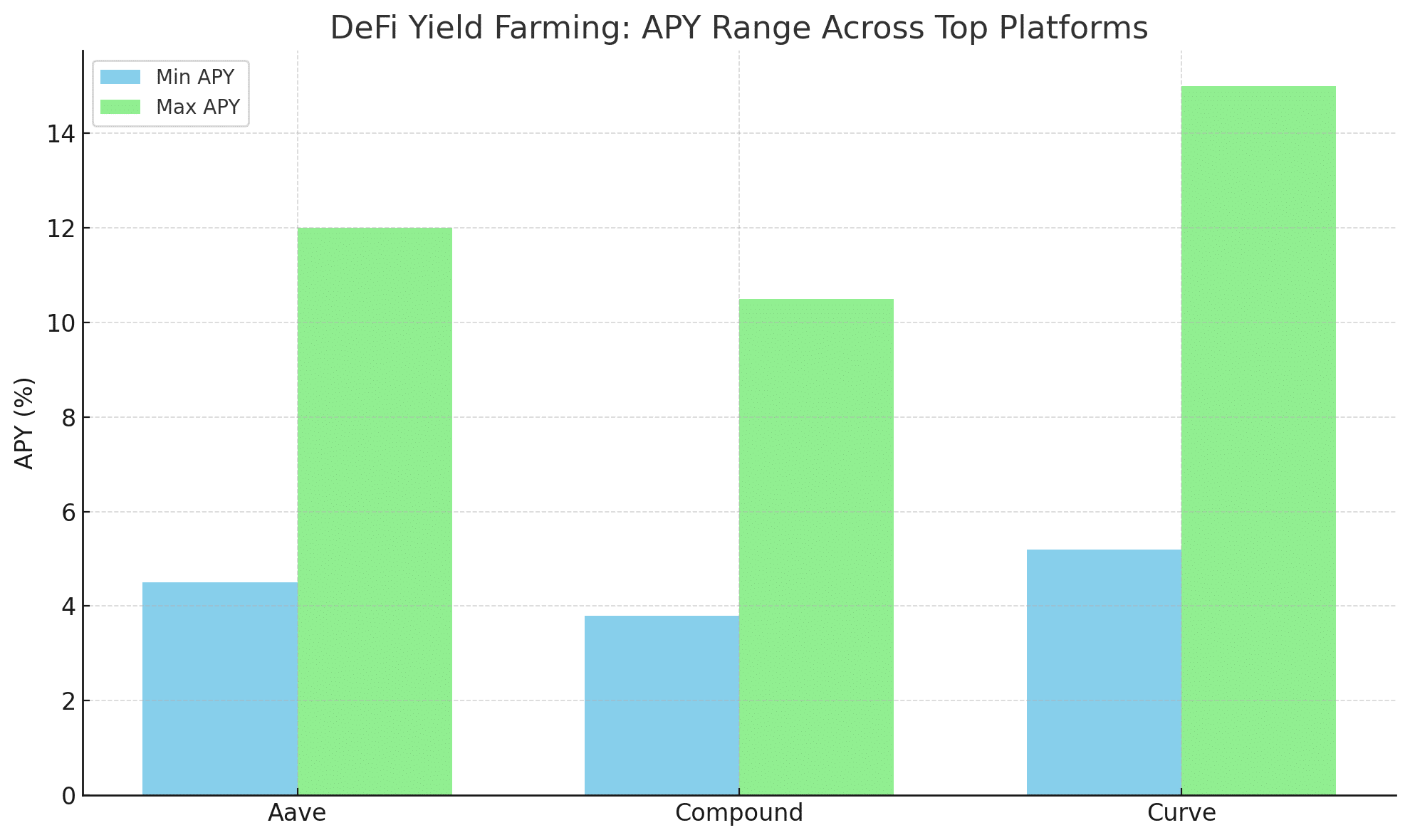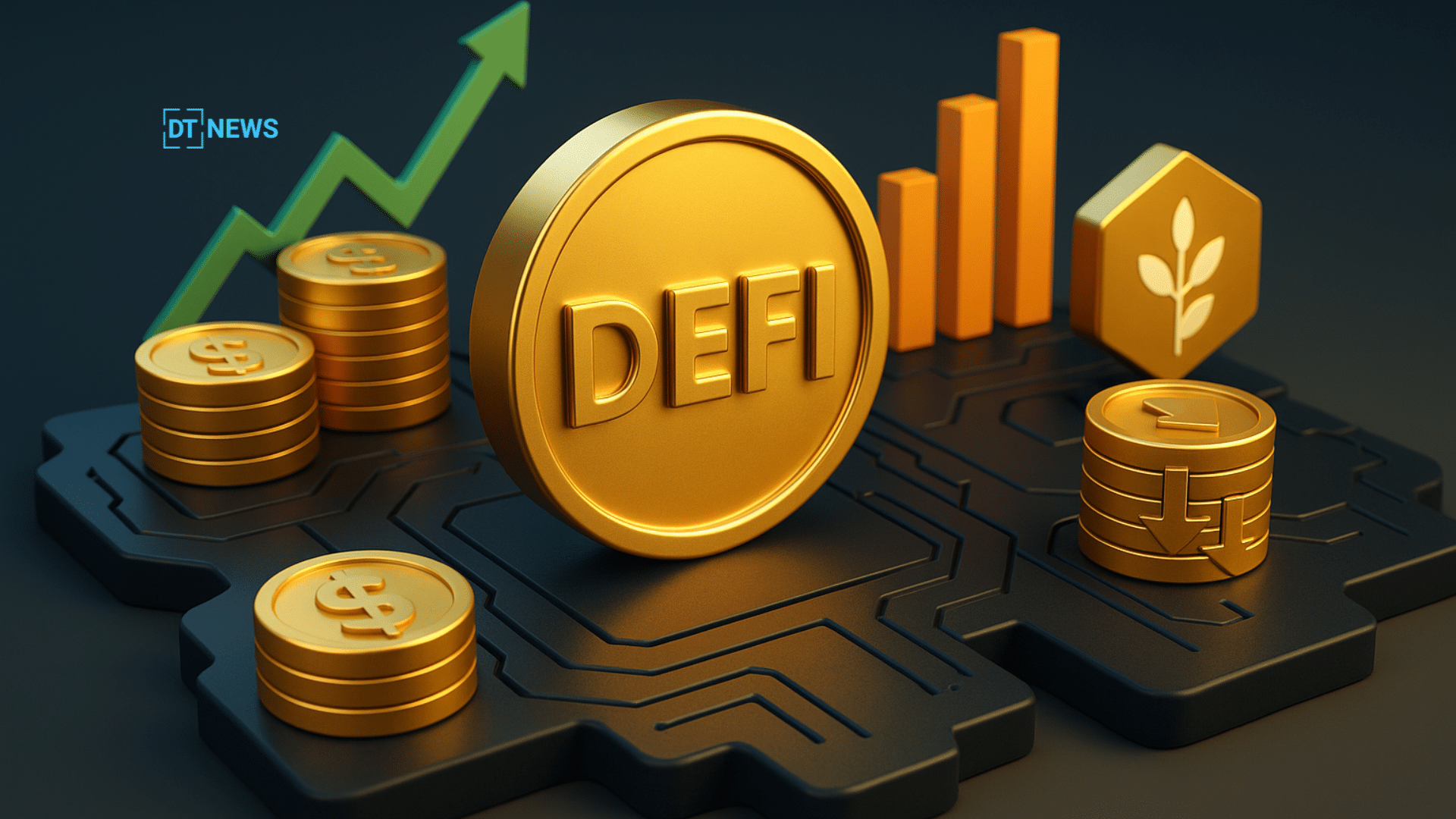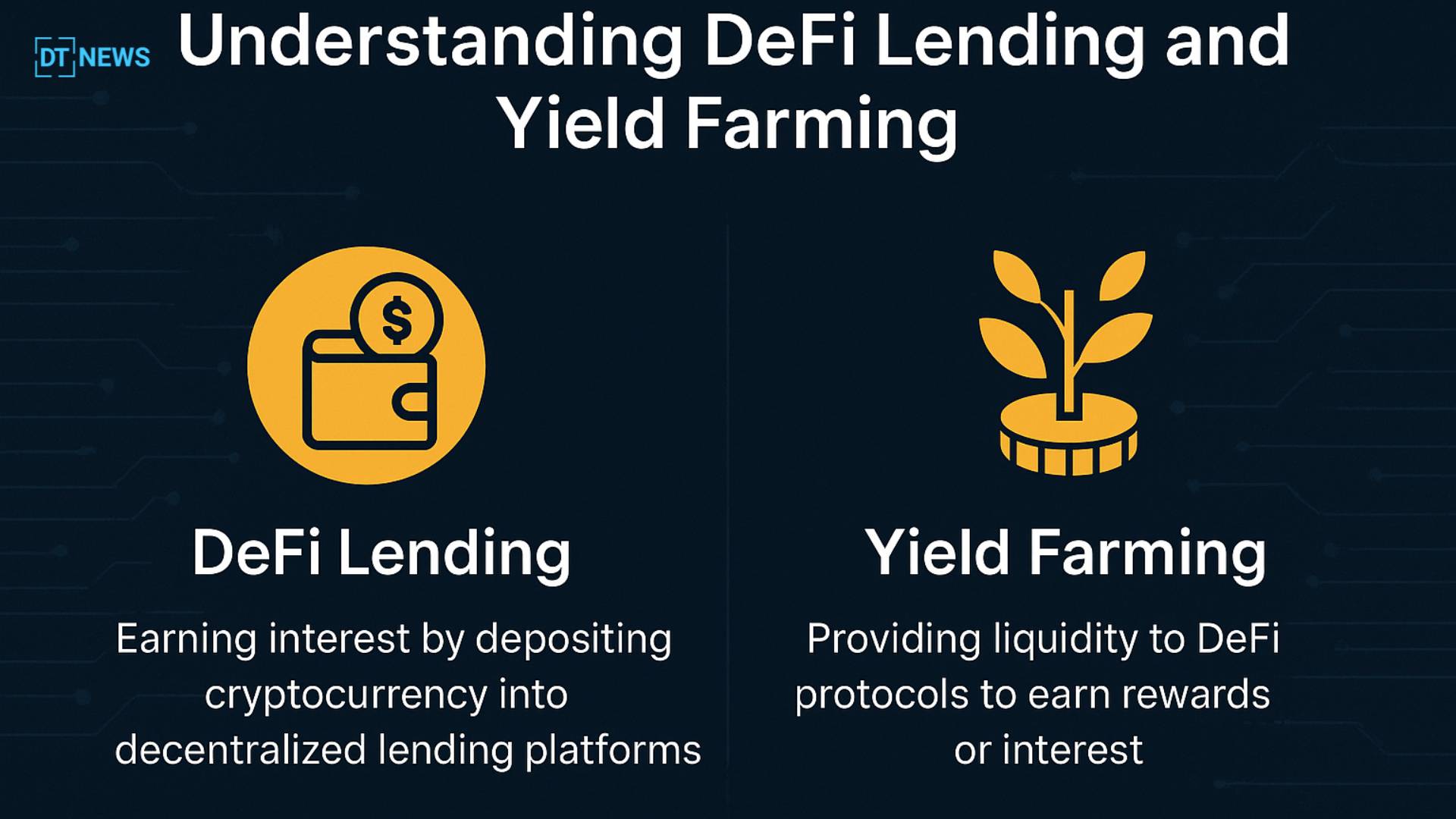In the crypto economy, decentralized finance (DeFi) has emerged as one of the most disruptive trends. It has transformed how people interact with money by eliminating middlemen like as banks and allowing permissionless lending, borrowing, and earning. Its primary features are DeFi yield farming and lending, both of which have enabled users to make significant returns on idle crypto assets.
- What is DeFi Lending
- What is Yield Farming
- Lending Protocols: Aave, Compound, and Curve Lead the Charge
- Understanding APY vs APR in DeFi Lending
- Risks in Yield Farming: Impermanent Loss and Liquidation
- Market Growth and Ecosystem Evolution
- Conclusion: DeFi Lending and Yield Farming – Knowledge is Yield
- FAQs
As traditional savings accounts struggle to keep up with inflation, DeFi offers double-digit annual yields on stablecoins and volatile assets alike. But how does it work? And what should investors know before diving in?
What is DeFi Lending
DeFi lending enables users to earn interest by putting cryptocurrency into decentralized protocols. These money are then borrowed by others, with all transactions handled by smart contracts and no banks involved. It’s a quick, worldwide, and trustworthy method to lend and borrow money safely.
What is Yield Farming
Yield farming is the technique of obtaining incentives by locking up cryptocurrency on DeFi platforms. Users exchange liquidity or stake tokens for interest or bonus tokens. It’s a popular approach to increase passive income, but it has dangers like as volatility and smart contract flaws.
Lending Protocols: Aave, Compound, and Curve Lead the Charge
DeFi lending works by enabling users to deposit cryptocurrency into smart contracts, which others can then borrow in return for interest. Protocols such as Aave and Compound have become household names in this industry. When a user puts cash into Aave, for example, they are given aTokens that earn interest in real time.
Compound, too, issues cTokens, which represent your interest in the lending pool. Borrowers must overcollateralize their assets to reduce systemic risk.
Curve Finance, which was first developed for stablecoin exchanges, has grown into a formidable yield aggregator. It enables users to deposit funds into liquidity pools that earn fees from traders while also obtaining extra token incentives like as CRV or third-party rewards from protocols like Convex.
In the realm of DeFi yield farming, these platforms are essential. Farmers often switch between protocols to maximize returns, sometimes stacking tactics such as leveraging borrowed assets or staking liquidity provider (LP) tokens in external farms.

Understanding APY vs APR in DeFi Lending
A typical source of misunderstanding in DeFi loans and yield farming is the distinction between APR (Annual Percentage Rate) and APY (Annual Percentage Yield). APR is the basic interest collected over a year without compounding, but APY accounts for the impact of compounding, an important aspect in DeFi, where profits are often reinvested automatically.
For example, if interest is compounded monthly, an APR of 15% may result in an APY of 16.1%. In DeFi yield farming, where treatments automatically compound (often every few seconds), the difference may be large over time.
Aave, for example, often shows APY to represent real-time compounding, giving consumers a more accurate sense of total returns. Compound, on the other hand, often breaks out borrowing and lending rates individually, sometimes in APR, making it critical to read platform disclosures thoroughly.
Risks in Yield Farming: Impermanent Loss and Liquidation
Despite its attraction, DeFi yield farming is not without danger. One key worry is impermanent loss, which happens when the value of a token pair in a liquidity pool deviates considerably. If one asset’s price rises relative to another, the LP loses potential returns compared to keeping the tokens altogether.
Another danger is liquidation, particularly for borrowers who use collateral to get loans. If the collateral’s value falls below a specific level, the protocol may automatically liquidate it to safeguard the system, resulting in borrower losses.
As DeFi protocols such as Aave extend into real-world assets (RWAs) and Layer 2 chains, users must evaluate risks at both the macro and technical levels. According to DeFi researcher Alex Krüger,
“Yield farming provides high profits, but it also entails smart contract risk, protocol risk, and market volatility. Understand what you’re growing.
Market Growth and Ecosystem Evolution
In 2024, the total value locked (TVL) in DeFi lending protocols surpassed $60 billion, owing to institutional acceptance, integration with Layer 2 solutions, and legislative certainty in some countries. Protocols like as Aave have released versions of Optimism and Base that provide near-instant transaction speeds and low gas expenses.
DeFi is also expanding to incorporate risk tranching, decentralized credit rating, and undercollateralized lending. These improvements aim to bring DeFi yield farming closer to traditional financial institutions, while remaining open, global, and programmable.
Curve just debuted its crvUSD stablecoin, which has automated liquidation methods, indicating a shift toward native stablecoin ecosystems inside DeFi protocols. This not only increases capital efficiency but also opens up new yield prospects for experienced farmers.
Conclusion: DeFi Lending and Yield Farming – Knowledge is Yield
Based on the latest research, understanding DeFi yield farming and lending is critical for any cryptocurrency investor seeking to generate passive income. While the rewards might be significant, so are the hazards. Platforms such as Aave, Compound, and Curve provide sophisticated capabilities, but users must understand how rates are computed, risks are handled, and how to defend against smart contract faults or unexpected market changes.
With innovation advancing and real-world applications expanding, DeFi yield farming may soon become more commonplace. For the time being, however, success is determined by doing research, remaining current, and farming smartly rather than hard.
FAQs
What is DeFi yield farming?
It’s a strategy where users earn rewards by providing liquidity or lending crypto on decentralized platforms.
How is APY different from APR?
APY includes compounding interest, while APR is a flat annual rate without compounding.
What are Aave, Compound, and Curve?
They are DeFi protocols that allow lending, borrowing, and yield farming through smart contracts.
What is impermanent loss?
It’s the loss LPs experience when the price of pooled tokens changes significantly during a farming period.
Glossary of Key Terms
DeFi (Decentralized Finance) – Financial services using blockchain to eliminate intermediaries.
Yield Farming – Earning rewards by locking crypto in DeFi protocols.
Aave – A DeFi lending protocol with real-time interest rewards.
Compound – A lending protocol where users earn interest through cTokens.
Curve – A DeFi platform focused on stablecoin swaps and yield aggregation.
APY – Annual Percentage Yield, including compounding interest.
APR – Annual Percentage Rate, excluding compounding.
Impermanent Loss – A temporary loss faced by LPs when token prices diverge.
Liquidation – Forced sale of collateral when its value drops below a protocol’s threshold.




















































































































